5G Helps Cloud Native Evolution
5G Helps Cloud Native Evolution
It is no doubt that mobile communication is accelerating its evolution to 5G, all Telecom Powers, mainstream communication operators and manufacturers are making early layouts and researches. How to find the best way to initiate 5G commercialization in its way to 5G?
Now let’s learn some knowledge.
What is 5G?
ITU defines three kinds of application scenarios for 5G: eMBB, mMTC and uRLLC.
ITU believes main business application domains and scenarios of 5G communication network are: eMBB(Enhanced Mobile Broadband),it is featured with super-high bandwidth requirement, such as HD video, virtual reality/enhanced reality etc service; uRLLC(Ultra-reliable and Low-LatencyCommunications),it is featured with high reliability, low delay, such as auto drive, remote medical care etc; mMTC(MassiveMachineTypeCommunications),it is featured with low power consumption, high connection density, such as smart city, smart agriculture etc services.
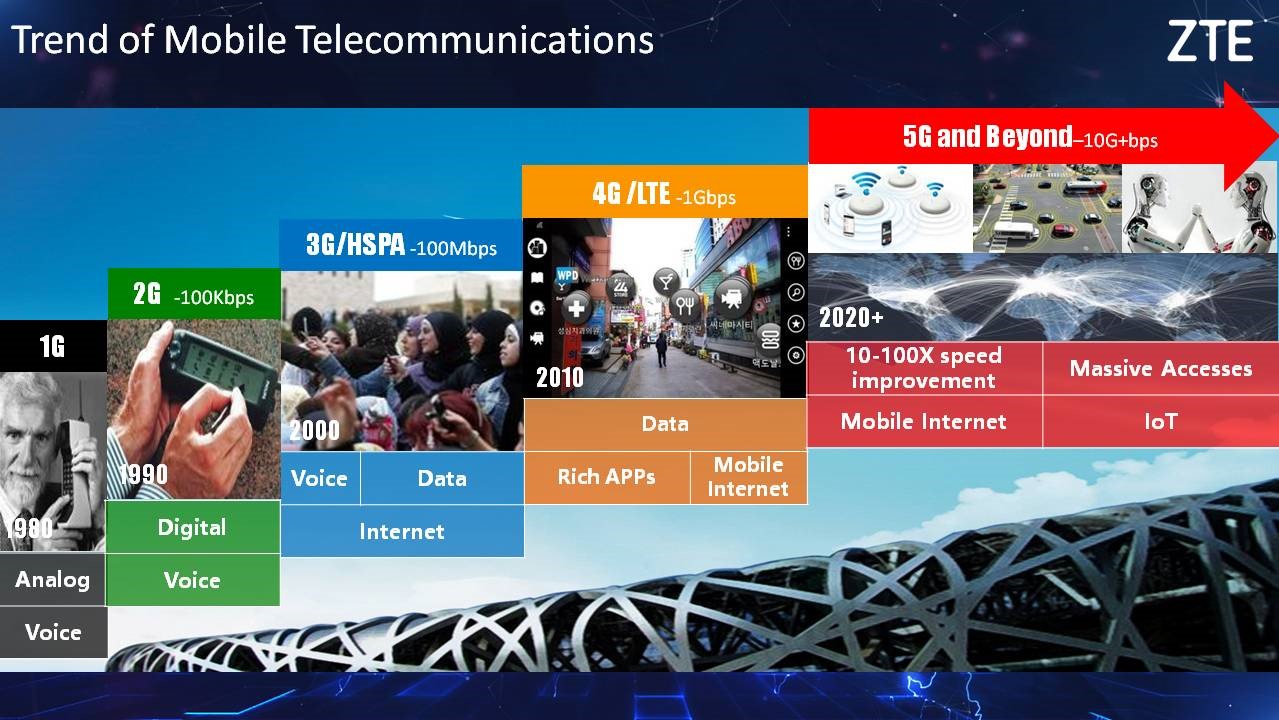
Meantime, 5G era faces the following challenges:
● Multiple business modes: consumer market, industry and enterprise market;
● Flexible services: it is difficult for traditional monolithic architecture applications to provide flexible services.
● Complicated network management: need to process different network access technology.
● Network security and privacy protection: wide application scenarios bring more security and privacy problems.
● Open ecology: open platform ability is convenient for fast and safe new services launch.
5G path for China Mobile, China Unicom and China Telecom
The 13th Five-year Plan has already put 5G research and development into national strategy.
On June, 2017, IMT-2020 (5G) summit sponsored by IMT-2020(5G) group was held in Beijing, Mr. Xi Guohua, commit member of China communication standardization association strategy advisory committee declares the first 5G version will be finished in the end of 2017.
Mr. Ma Hongbin, Vice president of China Unicom network construction department, said China Unicom would find 2 to 4 cities to perform 5G technology and networking verification. Now China Unicom has carried out mixed transformation, 20 billion funds are put into 5G networking and trial commercialization.
China Telecom has unequivocally stated that it would put forward 5G trail commercialization in 2019, it aims at providing networking deployment and business services in 2020, then continuously promote 5G evolution after that.
5G hotspots of International standard organization
Meantime, the global 5G standard establishment process is also accelerating. 3GPP standard organization has officially passed 5G standard process accelerating proposal, Non-Standalone based Optional 3 has been 6 months earlier than Standalone based Option 2.
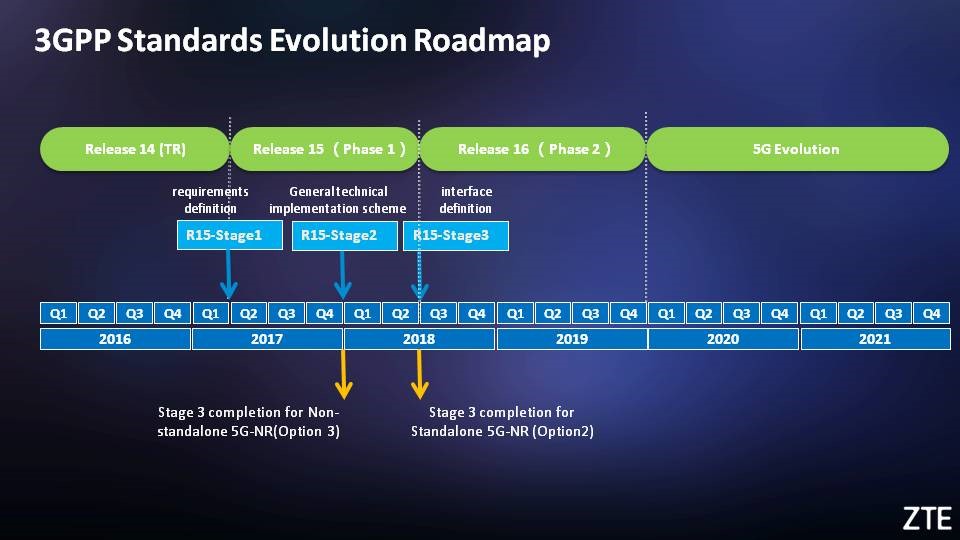
3GPP has officially confirmed to adopt SBA architecture provided by China Mobile and other 26 countries as the uniform infrastructure architecture, this service-based architecture design mode enabled 5G network to be Cloud Native, which is one of the hotspots in 5G evolution path.
ETSI standard organization put forward Cloud Native VNF Design and Cloud-Native Design principles in the latest “NFV-EVE011v004”and”NFV-IFA029” drafts, which introduces Cloud-Native concept in terms of service architecture and design principles.
CloudNative Evolution Trend
In fact, CloudNative has already have lots of fans before 3GPP etc national organizations pay attention to it.
On May, 2010, Paul Fremantle, CTO of WSO2 put forward CloudNative in the Blog, its main ideas are distributed, multi-tenant/charge on demand, flexible and elastic
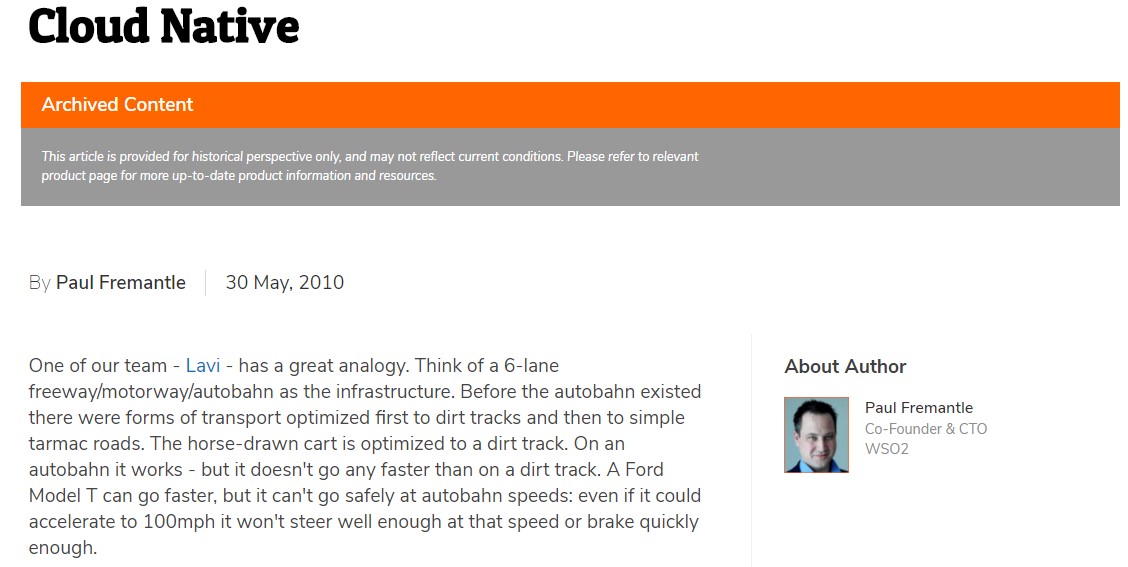
On December, 2013, Adrian Cockcroft, Director of Netflix cloud architecture, put forward CloudNative MicroServices, organization based on public cloud, microservice/scalability/availability/self healing, CI/CD/DevOps, agility/efficiency and highly trust.
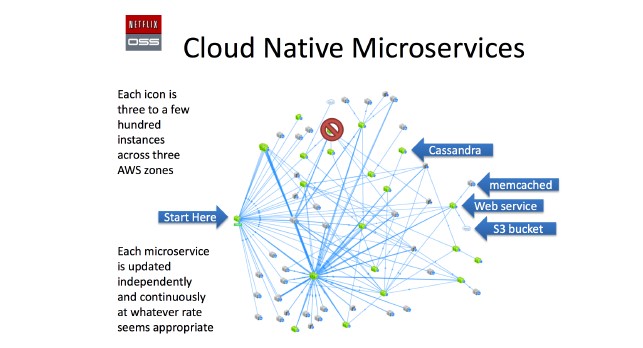
On February, 2015, Pivotal architect, Matt Stine published a book, Migrating to Cloud Native Application Architectures”, its main views are microservice, DevOps, continuous delivering, agile infrastructure, API-based coordination and 12 factors.
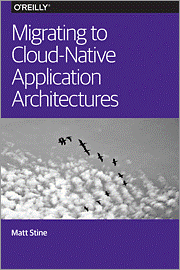
On July, 2015, Google announced to establish CNCF(Cloud Native Computing Foundation), belonging to Linux foundation, and officially released Kubernetes 1.0 version, it aims at Cloud Native service cloud computing, and dedicated to maintaining and integrating open source technology, orchestration container micro service architecture applications.

Cloud computing vendors build CNCF open source community
CNCF believes CloudNative should have three basic features: Containerized, Dynamically orchestrated and Microservices oriented.

CNCF issued the latest Cloud Native Landscape v0.9.6, now it has already hosted 10 open source items : Kubernetes,Prometheus,OpenTracing,Fluentd,linkerd,gRPC,CoreDNS,containerd,Container Runtime,CNI.
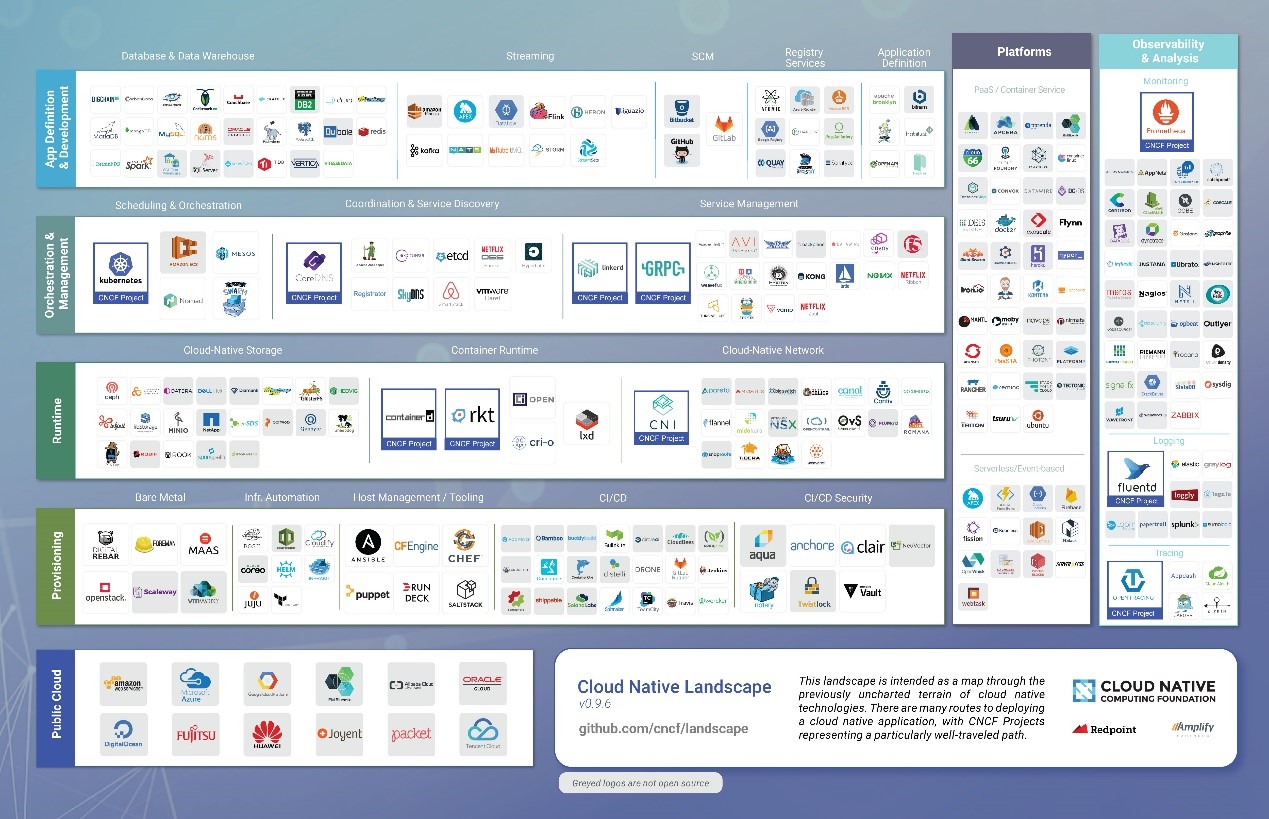
Recently, mainstream cloud computing tycoons all jointed CNCF foundation, i.e. Google, Microsoft, AWS, Alibaba, Tencent etc public cloud vendors, the latest internal information shows that the leading enterprise of China Communication industry, ZTE, has joined CNCF as a golden member, which has issued 5G core network white paper lately, and put forward 5G-oriented core network solution Cloud ServCOre, it combines existing standard and open source Cloud Native and Microservice architecture, and put forward Cloud Native 5G core network evolution and deployment technical path. ZTE has deep understanding and over 30 years of telecom network developing and construction experience, it is also actively participating in Kubernetes project.
ZTE’s participation in CNCF foundation shows ZTE is keeping up with the times in both product and platform research ability, it also put launches Cloud Native oriented solution TECS, which enhances telecom features based on Open source community contributions: high performance, NUMA / CPU Pinning / SR-IOV / DPDK; high availability: complete failure detection mechanism, flexible VM backup mode, carrier-class QoS; hardware self-discovering, automatic batch installation; multi-forms: support naked metal, CM and container etc; mixed architecture: infrastructure support public and private cloud, mixed cloud and container platform etc infrastructure platform access.


